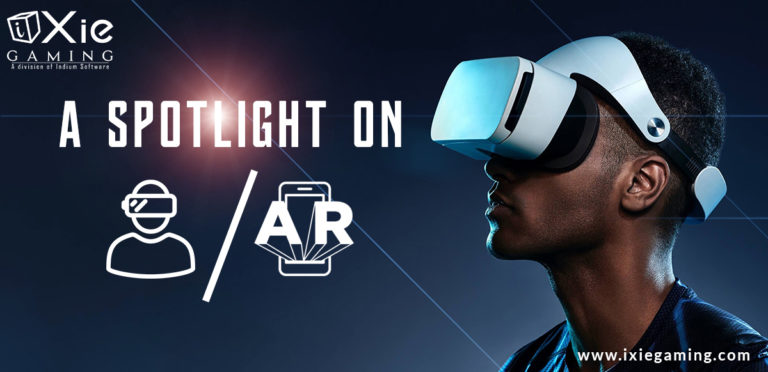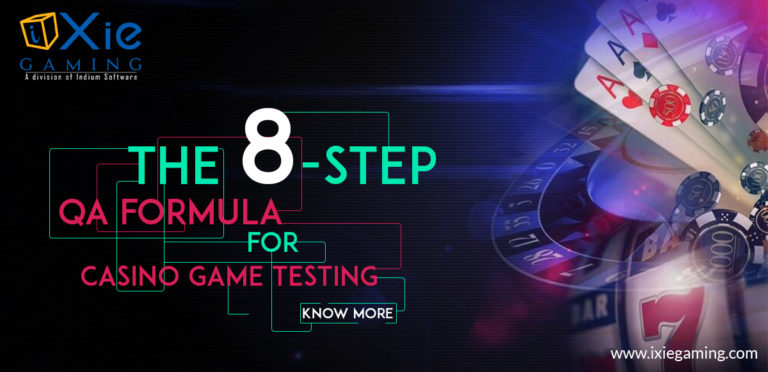Nearly every industry will evolve courtesy of generative artificial intelligence (AI) – and the gaming sector isn’t an exception. Generative AI is one of the technologies with the potential to revolutionize how developers create games. While it is in its early stages, gaming executives believe that generative AI will contribute to over half of the game development process in the next 5 to 10 years.
But what is generative AI? How will it transform the gaming landscape? And are there potential challenges that developers should be aware of when using generative AI to build games? Join us as we thoroughly explore the potential of generative AI in the gaming landscape and how it will influence the industry.
What is Generative AI?
As the name suggests, generative artificial intelligence is a type of AI technology that can generate different types of content. This content may include synthetic data, audio, video, text, and imagery. Generative AI models can produce high-quality content depending on the data they were trained on.
Imagine being able to create a game by simply inputting a few prompts. That would not only save time but also revolutionize game development. Also, it can improve player experiences and transform the gaming industry as a whole.
8 Ways in Which Generative AI is Changing the Gaming Industry
Here are ways in which generative AI is transforming the gaming landscape:
1. Procedural Content Generation (PCG)
PCG is a generative AI technology that enables developers to create large and dynamic game worlds and levels automatically. It significantly minimizes the effort and time needed to design game content. Also, it provides players with more diverse and ever-changing gaming environments. This enhances replayability.
2. AI-Driven Non-Playable Characters (NPCs)
AI-powered NPCs and opponents can behave realistically and adapt to player actions. With generative AI, you can create NPCs with human-like decision-making capabilities. As a result, it makes in-game interactions more immersive and challenging.
3. Content Personalization
Each player is unique, and so is their playing behavior. Generative AI models can analyze player behavior and preferences and personalize in-game content, like item drops, storylines, and quests. But what does that mean to the player? Well, personalized game content improves player engagement and promotes longer playtimes.

4. Game Testing and Bug Detection
Testing your game is crucial to ensuring its success once it is launched. It helps you detect bugs and glitches that may negatively impact the players’ gaming experience. However, manually testing all scenarios can be time-consuming. Also, you may not be able to simulate player behaviors accurately. And that’s where generative AI comes in handy.
Generative AI can help during game testing by simulating player behavior and identifying bugs in real time. This accelerates the testing process. Also, it improves the overall game quality, making players love it even more.
5. Game Conceptualization and Design
Game conceptualization and design are among the hardest tasks a game developer has to handle. They form the foundation of your game. Therefore, your game will be low-quality if it is conceptualized and designed poorly. This implies that players will not like it, resulting in poor performance in the market. With many games available today, gamers won’t hesitate to switch to a different game. But how can generative AI help in-game conceptualization and design?
Generative AI tools can help game designers in different ways. For instance, they assist in generating game concepts, gameplay mechanics, and art assets. This streamlines the early game development stages. Also, it can inspire creative game ideas.
6. Natural Language Processing for Conversational NPCs
Natural language processing (NLP) is increasingly being embraced in the gaming industry. NLP-powered generative AI enables non-playable characters to engage in a more dynamic and human-like conversation with players. This results in deeper immersion and storytelling within the game. Also, players can interact with NPCs in a more meaningful and interactive manner.
7. Visual Enhancements
AI-driven upscaling, ray-tracing, and denoising techniques can improve the visual quality of games. Generative AI algorithms can improve textures, create life-like lighting effects, and minimize aliasing. This results in more realistic and stunning gaming experiences.
8. Adaptive Difficulty
Not every player has the same gaming experience. Some may be pros, while others are newbies. Giving the two players a game with the same difficulty level will leave one player bored due to the game’s easiness or struggle to complete their mission. Either way, the pro will look for a more challenging game, while the newbie will go for a simpler game. But how do you adapt your game’s difficulty based on the player’s experience? Here’s where generative AI comes in.
Generative AI can analyze player behavior and in-game data to predict player actions and experience. As a result, it can adjust the game’s difficulty level in real time based on the player’s performance and skill. This ensures the gaming experience remains enjoyable and engaging for players of varying skill levels.

Challenges of Generative AI in Gaming
It’s no secret that generative AI can significantly transform the gaming landscape. However, despite these benefits, it has several potential disadvantages, including the following:
Technical Challenges
Resource Intensity: AI models, especially those generating complex game assets or scenarios, require significant computational power. This can lead to high costs and accessibility issues for smaller development teams.
Integration with Game Engines: Ensuring seamless integration of AI-generated content with existing game engines and workflows can be complex. It requires the AI to understand and adhere to game-specific constraints and logic.
Real-Time Generation: Many AI models operate in a batch mode, taking time to generate content. Adapting them for real-time generation in dynamic gaming environments can be challenging.
Quality and Consistency: Maintaining a consistent quality of AI-generated content, such as graphics, narratives, or music, and ensuring it aligns with the game’s overall aesthetic and theme is difficult.
AI Training and Data: Obtaining large and diverse datasets to train AI models specifically for gaming purposes can be challenging, and there’s also the issue of bias in the training data.
Ethical Challenges
Intellectual Property: AI can generate content similar to existing games or assets, leading to potential intellectual property infringements.
Player Data Privacy: Utilizing player data to enhance AI algorithms raises privacy concerns, especially if data is used without explicit consent.
AI Bias: Biases in training data can lead to AI-generated content that perpetuates stereotypes or is insensitive to certain groups.
Dependence and Detachment: Over-reliance on AI for content generation might lead to a reduction in human creativity and skills in game development.
Creative Challenges
Originality: There’s a risk that AI-generated content may lack the originality and creative spark that human designers bring, leading to repetitive or uninspired game elements.
Narrative Complexity: While AI can generate basic storylines, creating deep, complex narratives with meaningful character development and plot twists remains a challenge.
Player Engagement: Balancing AI-generated content to ensure it remains engaging, challenging, and rewarding for players is difficult, as AI might not fully grasp human emotions and motivations.
Artistic Vision: Ensuring that AI-generated content aligns with the artistic vision and thematic elements of the game requires careful oversight and curation.
Final Thoughts
Generative AI is changing the gaming landscape. From procedural content generation to personalization of game content and adaptive difficulty, generative AI has the potential to take the gaming world to the next level. However, game developers must be careful of the potential disadvantages of generative AI. These include quality deterioration and copyright infringement concerns. Therefore, no matter how developers use generative AI to build their games, they should leverage it as a support tool rather than a replacement for human creativity. They can do so by balancing the usage of generative AI with human creativity to create more accessible, innovative, and engaging gaming experiences for players globally.
Frequently Asked Questions:
Generative artificial intelligence is a type of AI technology that can generate different types of content. This content may include synthetic data, audio, video, text, and imagery. Generative AI models can produce high-quality content depending on the data they were trained on.
Some of the ways in which generative AI is changing the gaming industry is as follows:
Procedural Content Generation (PCG)
AI-Driven Non-Playable Characters (NPCs)
Content Personalization
Game Testing and Bug Detection
Game Conceptualization and Design
Natural Language Processing for Conversational NPCs
Visual Enhancements
Adaptive Difficulty
The technical challenges of Generative AI are as follows:
Resource Intensity
Integration with Game Engines
Real-Time Generation
Quality and Consistency
AI Training and Data
The ethical challenges of Generative AI are as follows:
Intellectual Property
Player Data Privacy
AI Bias
Dependence and Detachment
The creative challenges of Generative AI are as follows:
Originality
Narrative Complexity
Player Engagement
Artistic Vision






